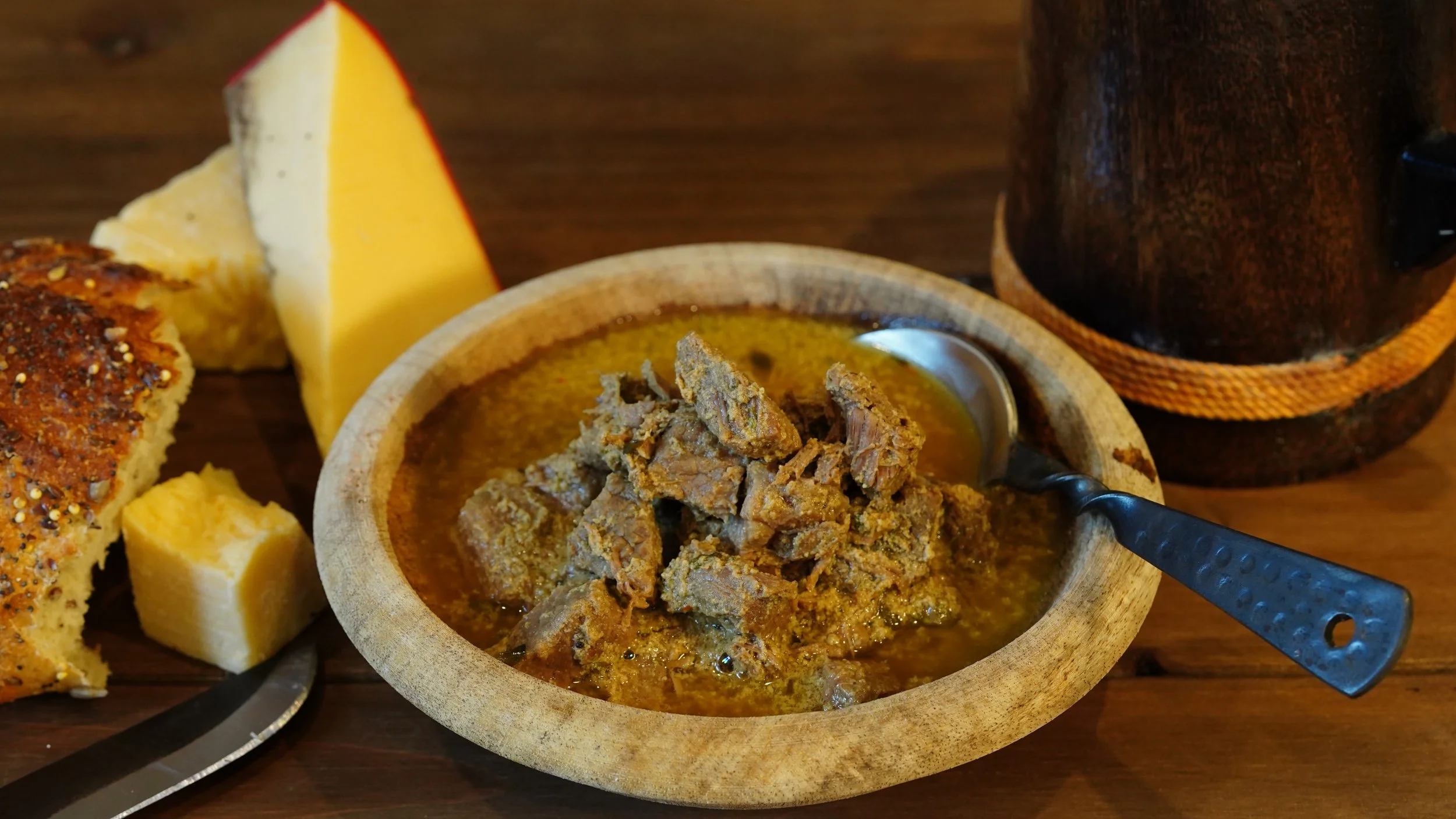Bokenade (Meat Stew)
Medieval stew with meat, spices, and verjuice, and thickened with egg yolks
City/Region: England
Time Period: 15th Century
Some medieval taverns may have had what is called a perpetual stew bubbling away. The idea is basically what it sounds like: as stew was taken out, more ingredients would be added in so that the stew kept on stewing. In southern France, there was a perpetual stew that was served from the 15th century (around when this recipe was written) all the way up until WWII, when they couldn’t get the right ingredients.
I have opted to not make this stew perpetual, but it is delicious. The medieval flavor of super tender meat with spices and saffron is so interesting, especially with the added acidity and sweetness from the verjuice.
A note on thickening with egg yolks: if you need to reheat your stew after adding the egg yolks, like I did, they may scramble a bit. The stew is still delicious, it’s just the texture that changes a little and it won’t be quite as thick.
“Vele, Kede, or Henne in bokenade
Take Vele, Kyde, or Henne, an boyle hem in fayre Water, or ellys in freysshe brothe, and smyte hem in pecys, and pyke hem clene; an than draw the same brothe thorwe a straynoure, an caste there-to Percely, Swag, Ysope, Maces, Clowys, an let boyle tyl the flesshe be y-now; than sette it from the fyre, and alye it up with raw yolkys of eyroun, and caste ther-to pouder Gyngere, Veriows, Safroun, and Salt, and thanne serve it forth for a gode mete.”
Ingredients:
- 3 to 4 lbs (1.5 kg) beef, goat, or chicken, with bones
- Water or broth (or a combination), enough to cover the meat
- Small handful of fresh parsley
- A few leaves of fresh sage
- A few sprigs of fresh hyssop, or about 1 teaspoon dried
- 1/2 teaspoon mace
- 1/8 teaspoon cloves
- 4 egg yolks
- 1/2 teaspoon ginger
- A pinch of saffron, ground
- 1 teaspoon salt
- 1/2 cup (120 ml) verjuice*
*See notes below.
Instructions:
- Place the meat in a large pot and pour in enough water and/or broth to cover it. Bring it to a boil, then reduce to a simmer. Skim off any scum or foam that rises to the surface. Simmer for about 1 hour, or until the meat easily comes away from the bone.
- Take the pot off the heat, remove the meat, and cut it into bite-sized pieces. Strain the broth.
- Return the cut up meat and the broth to the pot. Chop the parsley, sage, and hyssop very fine, then add them to the pot. Add the mace and cloves, and give it a stir. Bring the stew to a simmer. Cover the pot with the lid and let it simmer for anywhere from 1 to 2 hours. The time is up to you, it just depends on how tender you want the meat to get. Check the pot a few times and add more broth and/or water if it starts to get low.
- After the meat is as tender as you like, take the pot off the heat. Let the broth cool for a few minutes while you whisk the eggs in a bowl, just enough so that they’re smooth. Take about 1/2 cup (120 ml) of the broth and add it to the yolks in a slow stream, whisking constantly. After the 1/2 cup of broth has been added, whisk in the ginger, saffron, and salt. Pour this mixture into the pot, then stir in the verjuice. (Add the yolks right before you want to serve it. If you reheat the stew, they’re likely to scramble a bit.)
- Serve it forth.
Notes
- Verjuice is made from unripened grapes and has a vinegary acidic-ness mixed with some sweetness. If you can't find it, try using a mixture of equal parts grape juice and red wine vinegar.
Some links on this site are affiliate links. If you buy something through them, it does not cost you anything more, but we will get a small commission which helps keep the site up and running. Thanks!


